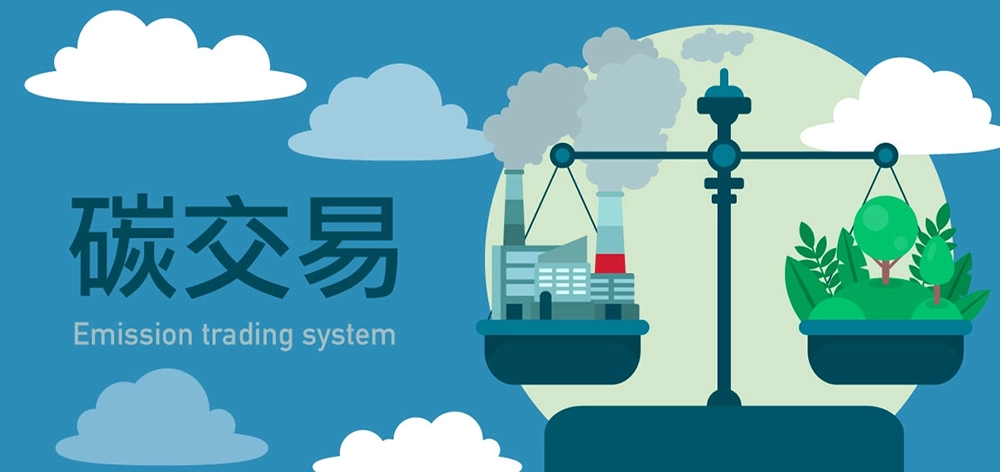Carbon Policy
FAQ | Common Carbon Policy ToolsCarbon trading, carbon taxes, and carbon fees are policy tools used to address climate change and reduce greenhouse gas emissions.

Common Carbon Policy Tools
By 2027, the advanced packaging market is expected to surpass traditional packaging.
Environmental policies and carbon regulations impact national economies and public welfare in various interwoven ways.
For example, imposing stricter regulations on high-carbon industries may lead to downsizing or transformation,
affecting employment and profits. At the same time, these policies can stimulate the development of green industries
and technologies, creating new economic growth opportunities.
Additionally, implementing carbon-related measures requires investment and financial support, which can initially strain government budgets.
Increased spending on carbon reduction technologies, environmental infrastructure, and sustainability education may impact other
public services. However, in the long run, such investments improve environmental quality, reduce health issues caused by pollution,
and provide tangible benefits to society.
Carbon trading, carbon taxes, and carbon fees are widely used policy instruments for tackling climate change and reducing emissions.
Below are common carbon-related terms and their explanations.
Carbon Trading
Carbon trading (emission trading system) is a market-based approach
that establishes a market for carbon emission rights, allowing businesses and nations to trade carbon allowances.
Each business or country is allocated a certain number of carbon emission credits. If emissions exceed the allocated amount,
additional credits must be purchased; if emissions are below the allocation, excess credits can be sold to other entities.
Through carbon trading, market mechanisms incentivize emission reductions.
For example, if a country implements a carbon trading system and allocates carbon credits to industrial firms,
each company receives a designated emissions limit, which decreases over time to encourage reductions.
Suppose Company A emits less than its allocated amount while Company B exceeds its limit.
Company A can sell its unused carbon credits to Company B.
By purchasing credits from Company A, Company B can legally exceed its emissions allowance, while Company A generates additional revenue.
This system allows businesses to choose between reducing emissions or buying credits, promoting overall emission reductions.
Carbon trading typically takes two forms: **Cap-and-Trade** and **Baseline-and-Credit Trading**.
Cap-and-Trade: The government sets an overall emissions cap, distributes allowances to businesses,
and permits trading of emission credits.
Baseline-and-Credit Trading: A baseline emission level is established. If a company reduces emissions below
the baseline, excess reductions can be converted into tradeable credits.
Carbon Offsetting
Carbon offsetting is a method of compensating for emissions by supporting activities that reduce greenhouse gas emissions.
Individuals or organizations purchase carbon offsets to neutralize their emissions and achieve carbon neutrality.
For example, an airline launching a new international route expects significant CO2 emissions.
To offset these emissions, the airline can invest in renewable energy projects such as wind farms or solar power plants.
The airline may partner with a carbon offset organization that manages various offset programs.
Based on the estimated emissions from its flights, the airline purchases offsets, directing funds toward clean energy projects,
energy efficiency initiatives, or reforestation efforts. By investing in carbon offsets,
the airline neutralizes its emissions and contributes to global emission reductions.
Carbon Fees and Taxes
Carbon Tax:
A carbon tax imposes a fee on CO2 emissions. Businesses or individuals must pay taxes based on their emissions,
increasing the cost of high-carbon activities and incentivizing cleaner energy choices.
Carbon taxes can be calculated based on emission volume or carbon intensity and are typically integrated into government fiscal policies.
**Example:** If a factory emits 1,000 tons of CO2 and the government sets a carbon tax rate,
the factory must pay **1,000 * $100 = $100,000** in carbon taxes. If the factory implements emission reduction measures
and lowers emissions to 800 tons, its tax liability is reduced to **$80,000**.
Carbon taxes encourage businesses and individuals to adopt cleaner technologies and reduce emissions to minimize costs.
Carbon Footprint Verification
Carbon footprint verification is the process of collecting and analyzing emissions data
to calculate an entity’s total carbon footprint. Businesses use carbon audits to assess their environmental impact
throughout production, transportation, and product lifecycle stages.
For example, a multinational company conducts a carbon footprint analysis for its products,
evaluating emissions generated during manufacturing, transportation, and usage. The assessment considers energy consumption,
material sourcing, and logistics. A verification agency audits the data and issues a carbon footprint report,
helping the company demonstrate environmental commitment and identify emission reduction opportunities.
Governments often mandate carbon audits for high-emission industries. Companies can voluntarily follow
greenhouse gas accounting standards such as **GHG Protocol** and **ISO 14064-1:2018** to assess emissions.
Carbon footprint verification enables businesses to strategize emission reductions, pursue carbon neutrality,
and meet supply chain sustainability requirements.
Managing Both Energy Efficiency and Carbon Reduction?
EMS Smart Energy Management System
As businesses face increasing pressure to achieve carbon neutrality or emission reduction goals to support global sustainability efforts, effective energy management has become a crucial step in achieving sustainable production.
Smart Energy Management System


